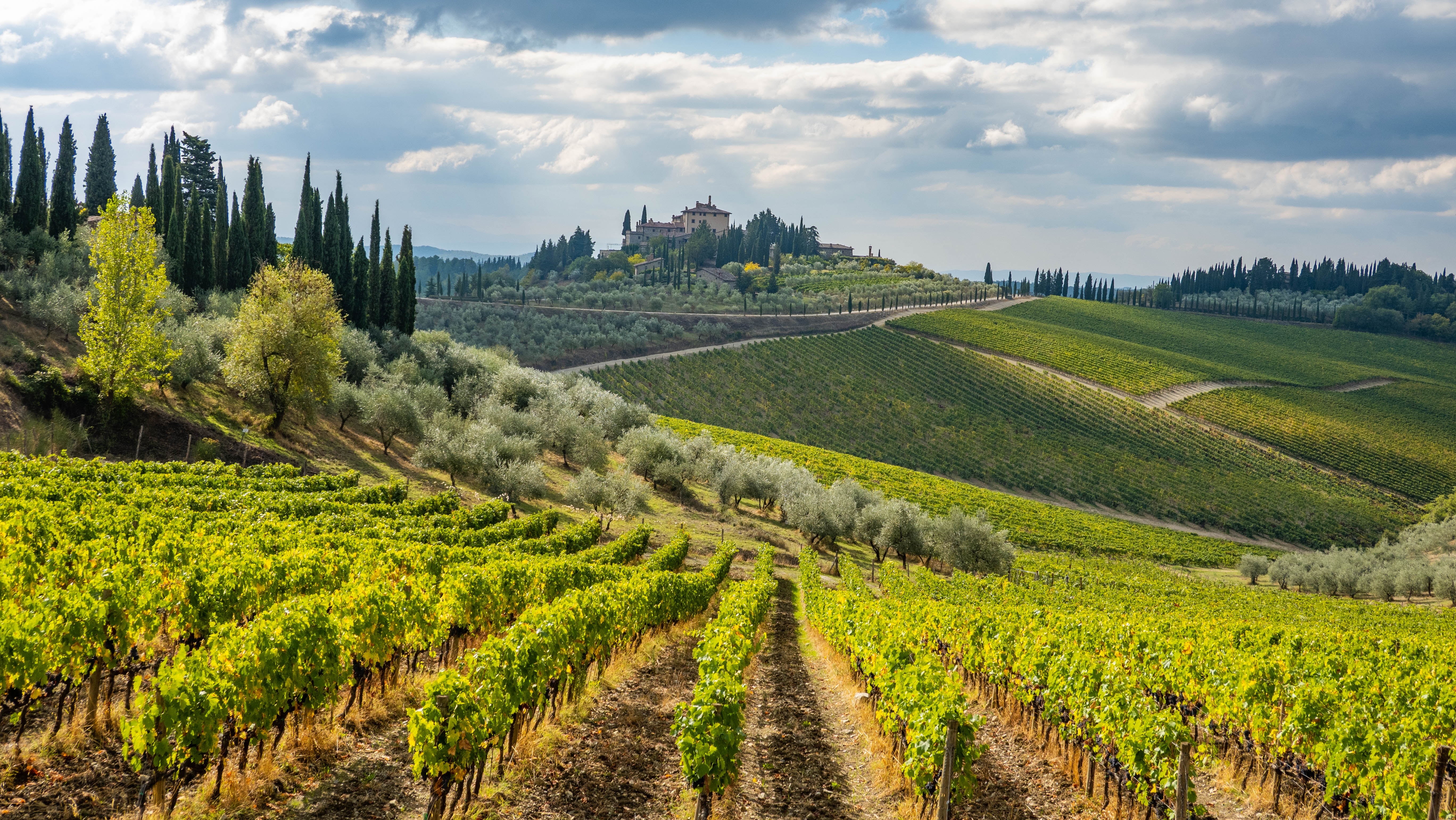4 Key Things to Know about Chianti

If you like wine, you’ve probably heard of Chianti before, and you may even think of those squat, straw-covered bottles on a red-checkered tablecloth next to a plate of spaghetti. But there’s much more to Chianti than that.
Located in Tuscany, Italy, the Chianti appellation is centered around the key cities of Florence, Siena, Arezzo, and Pisa. Here are four key things to know about this famous wine region.
1. The main grape is Sangiovese
The region’s main grape variety is Sangiovese, a red grape with high acidity and medium tannins. Centuries ago, early producers in the region determined that Sangiovese expressed itself the best in this region’s soils and climate, so they established laws to regulate and maintain the production of this grape. Wines produced within this entire region can call themselves Chianti DOCG, and the laws specify production rules, including containing at least 70% Sangiovese.
2. Sangiovese is a perfect food wine
Sangiovese is known for its high acidity, light-bodied structure, and concentrated strawberry and floral notes, which makes it an ideal pairing for dishes with red sauce, like pizza or pasta. It also has signature notes of black and red cherries, violets, herbs, and earthiness, with a medium level of tannins and body.
3. Chianti contains important wine regions, including the famous Chianti Classico
Within Chianti, there are different regions that each have their own rules and regulations, as well as different soils and microclimates, so they can vary in quality, taste, and price. One of the most important regions is Chianti Classico. Chianti Classico DOCG is its own appellation in the heart of the Chianti region, considered the highest quality production of Chianti wine. To be called Chianti Classico, the wine must be produced within the historic boundaries of Chianti, named the Chianti Classico territory. This region has higher elevations and produces complex flavors of violets, spices, juicy cherries, and strong tannins. Here, the wine must contain at least 80% Sangiovese. In addition to Chianti Classico, two other important sub-zones within the Chianti territory include Chianti Rufina and Chianti Colli Senesi.
4. Look for names that indicate the aging length
The length of aging can denote different quality tiers in the Chianti region, too. A simple Chianti is aged for 6 months and displays simple, tart characteristics. A Chianti Superiore is aged for 12 months and has slightly bolder flavors and acidity. Chianti Classico wines can have two additional levels: Riserva means it has been aged for 24 months and has top-level qualities of Chianti; Gran Selezione means it’s been aged at least 30 months years and is one of the top wines of the region.
Want a taste of Chianti Classico at home? Our Wine Directors recommend 2019 Marchese Antinori Chianti Classico Riserva ($50), a fresh and enticing wine with intense notes of ripe red fruit, spicy hints of tobacco and cinnamon, and silky tannins with a savory, persistent finish.
